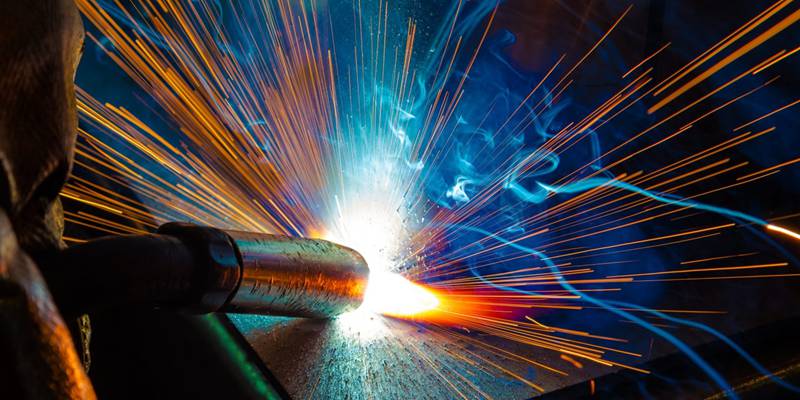Bonding WPS for Beginners: Getting Started with Welding Procedure Specifications
Bonding WPS for Beginners: Getting Started with Welding Procedure Specifications
Blog Article
The Ultimate Guide to Welding WPS Procedures: A Comprehensive Summary for Welders
In the elaborate world of welding, Welding Treatment Requirements (WPS) serve as the foundation of making sure quality, uniformity, and safety and security in welding operations. Recognizing the nuances of creating, applying, and keeping an eye on WPS procedures is crucial for welders seeking to elevate their craft and meet sector standards. As we explore the various elements of a WPS and explore the complexities of certification and certification, we will reveal the vital function these procedures play in the world of welding. Let's embark on a journey to decipher the intricacies and significance of WPS procedures in welding practices.
Value of WPS Procedures
Comprehending the value of Welding Treatment Specifications (WPS) procedures is important for making certain the quality and honesty of bonded frameworks. WPS procedures work as a roadmap for welders, describing the needed actions, specifications, and materials required to attain an audio weld. By adhering to WPS standards, welders can make sure consistency in their work, causing structurally audio and trusted welds.
One of the main factors why WPS procedures are important is their duty in maintaining weld top quality and honesty. Complying with the defined welding specifications and strategies described in the WPS helps prevent defects such as porosity, fracturing, or incomplete combination, which can endanger the toughness and longevity of the weld.

Components of a WPS
A Welding Procedure Specification (WPS) usually makes up crucial elements that information the specific requirements for carrying out a weld, ensuring consistency and quality in the welding procedure. The crucial elements of a WPS consist of necessary variables such as base steels, filler metals, interpass and preheat temperature levels, welding processes, protecting gases, welding positions, and post-weld warmth therapy needs.
Base metals refer to the materials being signed up with, while filler metals are utilized to load the gap in between the base metals throughout welding. The welding process lays out the details method to be utilized, whether it's gas metal arc welding (GMAW), secured metal arc welding (SMAW), or one more approach. Welding placements define the alignments in which welding can be executed.

Certification and Accreditation
Having established the vital elements of a Welding Treatment Requirements (WPS), the focus now shifts towards the crucial elements of certification and certification in welding techniques.

Accreditation, on the various other hand, is the formal recognition of a welder's certifications by an appropriate accreditation body or company. Welding accreditations are commonly based on the details welding procedures, materials, and settings a welder is qualified to collaborate with. Holding a legitimate welding accreditation demonstrates that a welder fulfills industry criteria and is competent to execute welding jobs to the called for specifications.
Producing a WPS
To establish a Welding Treatment Spec (WPS) that satisfies market requirements, careful consideration of welding processes, materials, and functional parameters is important (welding WPS). The primary step in creating a WPS is to determine the welding procedure to be used, such important source as gas metal arc welding (GMAW) or secured steel arc welding (SMAW) As soon as the welding process is figured out, the following critical facet is choosing the proper materials, considering elements like base steel kind, thickness, and joint design. Operational criteria such as welding present, voltage, traveling speed, and shielding gas structure have to also be meticulously specified in the WPS.

Executing and Monitoring WPS
Upon finalizing the detailed Welding Treatment Specification (WPS) that thoroughly information welding procedures, materials, functional parameters, and high quality assurance steps, the emphasis moves to browse around this web-site efficiently carrying out and monitoring the established procedures. Application includes ensuring that all welders included in the project know with the WPS and follow it carefully during the welding process. This requires giving ample training and supervision to ensure adherence to the defined treatments. Keeping an eye on the WPS entails continual oversight to confirm that welding activities line up with the documented specs. Evaluations, screening, and quality assurance procedures are crucial components of the monitoring procedure to identify any type of issues or deviations immediately. Routine audits and testimonials of the welding treatments aid in preserving uniformity and quality throughout the job. Effective implementation and monitoring of the WPS are important for making sure the stability, strength, and security of the bonded joints, eventually adding to the total success of the welding job.
Conclusion
Finally, understanding and complying with Welding Procedure Specs (WPS) is important for welders to ensure top quality, consistency, and security in their job. By understanding the parts of a WPS, getting appropriate qualifications and qualifications, producing detailed treatments, and carrying out and checking them successfully, welders can improve their abilities and proficiency in welding methods. Sticking to WPS procedures is vital for producing premium welds and conference sector standards.
In the intricate world of welding, Welding Procedure Specs (WPS) serve as the foundation of making sure quality, consistency, and safety in welding procedures. The welding process lays out the particular technique to be made use of, whether it's gas metal arc welding (GMAW), shielded steel arc welding (SMAW), or another approach.To establish a Welding Procedure Requirements (WPS) that meets sector criteria, mindful factor to consider of welding processes, products, and operational specifications is vital. The initial step in producing a WPS is to determine the welding procedure to be used, such as gas metal arc welding (GMAW) or shielded steel arc welding (SMAW)Upon wrapping up the comprehensive Welding Procedure Specification (WPS) that meticulously information welding procedures, products, operational criteria, and high quality assurance steps, the focus moves to effectively carrying out and checking the recognized procedures.
Report this page